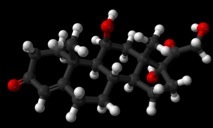Stress and
Maternal and Child Health


Quansys Biosciences

Cortisol
Estrone Glucuronide
Principle Investigator: Dr. Pablo A. Nepomnaschy, Maternal and Child Health Lab, Faculty of Health Sciences, Simon Fraser University
One of the main research goals of the Maternal and Child Health Lab is to assess how daily stressors, including physiological and psychosocial
challenges, influence women’s
reproductive health and the health
and development of their children.
The neuroendocrine axes regulating
stress response (the hypothalamo-
pituitary-adrenal axis) and
reproduction (the hypothalamo-
pituitary-gonadal axis) are
interconnected. However, it is not
clear how these axes interact as
women transition between
reproductive phases.
Research Goals:
-
1.To develop a comprehensive model of the interactions between women’s stress and reproductive physiology in natural, non-clinical contexts across reproductive transitions and to evaluate the effects of these interactions on women’s reproductive outcomes
-
2.To develop basic guidelines for the proper use of cortisol as a physiologic marker of stress in women of reproductive age
-
3.To determine how variation in maternal cortisol levels during early gestation influences fetal and post-natal development of the hypothalamo-pituitary-adrenal axis and how these children subsequently respond to daily stressors
To meet these goals we are measuring urinary hormones and metabolites associated with stress, reproduction, energetic status and immune function in specimens collected across the transitions between reproductive phases and relating variation in these physiological measures to reproductive endpoints, including length of postpartum amenorrhea, cycle quality postpartum, fecundability and pregnancy maintenance.

Past Research
The hypothalamo-pituitary-adrenal (HPA) axis and the female hypothalamo-pituitary-gonadal (HPG) axis. [larger image]
